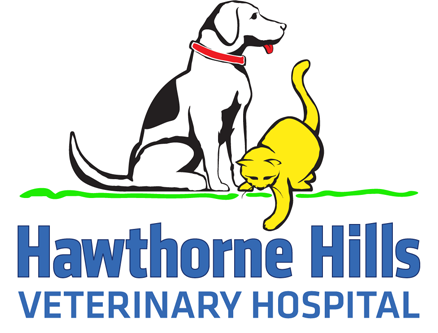
Complicated medical cases are something that Hawthorne Hills Veterinary Hospital doctors enjoy and we are skilled at helping you navigate the best approach for your pet.
 Gabby is a happy and friendly 7 year old Keeshond who ended up at a local emergency hospital earlier this summer because she had a seizure. While the seizure subsided, the ER doctors suspected that she also had a disease called Cushing’s syndrome. Gabby’s condition was initially treated at another veterinary facility but her owner came to our Seattle hospital to better understand Gabby’s treatment and to formulate a long-term care plan.
Gabby is a happy and friendly 7 year old Keeshond who ended up at a local emergency hospital earlier this summer because she had a seizure. While the seizure subsided, the ER doctors suspected that she also had a disease called Cushing’s syndrome. Gabby’s condition was initially treated at another veterinary facility but her owner came to our Seattle hospital to better understand Gabby’s treatment and to formulate a long-term care plan.
Cushing’s disease is associated with the Adrenal glands (which are in the belly) and the Pituitary gland (located in the brain) which tells the Adrenal glands when to produce hormones and when to stop production. Sometimes something goes haywire with this back and forth conversation between the Adrenals and the Pituitary gland and the result is too much cortisol in the body. Many of you may know about the side effects of steroids – well, this disease has all of those issues built in.
 Gabby developed some classic symptoms:
Gabby developed some classic symptoms:
- Panting all the time.
- Large patches of missing fur.
- Weight gain.
- Rounded ‘pot bellied’ appearance.
- Drinking a lot of water.
This disease also affects the appetite and many pets will have a dramatic increase in appetite, not just wanting to be fed more often, but the type of increased appetite where they get into cupboards, the garbage, into packages etc., seeking any type of food available.
In addition, cortisol interferes with insulin, so pets can develop high blood sugar like a diabetic, thin skin that tears easily and pets can experience low energy to the point of getting tired quickly just doing simple activities. The symptoms generally develop over many months so it may not be obvious at first and it is easy to not realize your pet has a disease underlying all of these physical changes.
After examining Gabby her owner and I discussed how to understand Gabby’s Cushing’s disease, what we would need to do to treat Gabby with the proper medications and also manage the other health issues that might be contributing to some of Gabby’s symptoms. We knew Gabby’s disease was caused by a change in the Pituitary gland but we didn’t have any information about how the rest of her body was functioning.
We evaluated a full blood panel especially to make certain her kidneys and liver were fine, we made sure Gabby didn’t have underlying thyroid disease (because of the patchy hair coat), we checked a urine sample for any evidence of infection (cortisol can interfere with healing and allow infections to go unchecked), and we evaluated her blood pressure to better understand some of the blood and urine changes we uncovered.
- There are several options for treatment of Cushing’s disease – the goal is to suppress the overproduction of cortisol and it can be tricky to ensure that sufficient drugs are given to control symptoms without causing the opposite disease – Addison’s. The various treatment plans have pros and cons to each choice; the final decision is a collaboration between the owner and doctor with regards to the goals, the costs, and the expected response to treatment as well as the individual patient and their specific health problems.
- One of the blood tests used to diagnose Cushing’s disease is an ACTH Stimulation test and this is also used to manage the treatment and adjust the dosing of medication. It can take several months for the body to respond to the drug, and with each adjustment of medication a new ACTH stimulation test has to be performed. As you can imagine, this can become somewhat expensive, but it is really important to get the dosing right.
Gabby’s prior testing indicated that she was responding well to her treatment, and in fact perhaps too well so that was part of our focus. We were suspicious that Gabby might be developing Addison’s disease so her dose of medication was lowered and she returned in two weeks for another ACTH stimulation test. This time, the cortisol levels were still quite low. In addition, Gabby’s normally enthusiastic energy was ‘off’, she didn’t eat her breakfast until half way through the day, and she wasn’t really drinking much water.
 These subtle changes were all signs consistent with developing Addison’s disease. Gabby was taken off all medication for about one week, until she started eating well, her energy improved and she was acting thirsty again. We reintroduced her medication at a much lower dose and her blood tests were improved into the normal range. Gabby has now bounced back and she is feeling really good. Her owner says “I have my dog back again’ which of course makes us all happy.
These subtle changes were all signs consistent with developing Addison’s disease. Gabby was taken off all medication for about one week, until she started eating well, her energy improved and she was acting thirsty again. We reintroduced her medication at a much lower dose and her blood tests were improved into the normal range. Gabby has now bounced back and she is feeling really good. Her owner says “I have my dog back again’ which of course makes us all happy.
Gabby will need to have regular checkups and testing to manage her health appropriately but we expect her to live well with this disease.
For more information on this disease:
http://www.vetmed.wsu.edu/ClientED/cushings.aspx
http://www.veterinarypartner.com/Content.plx?P=A&S=0&C=0&A=619
http://www.veterinarypartner.com/Content.plx?P=A&S=0&C=0&A=1551
Picture of “pot bellied” appearance: http://www.veterinarypartner.com/Content.plx?P=A&S=0&C=0&A=1193

